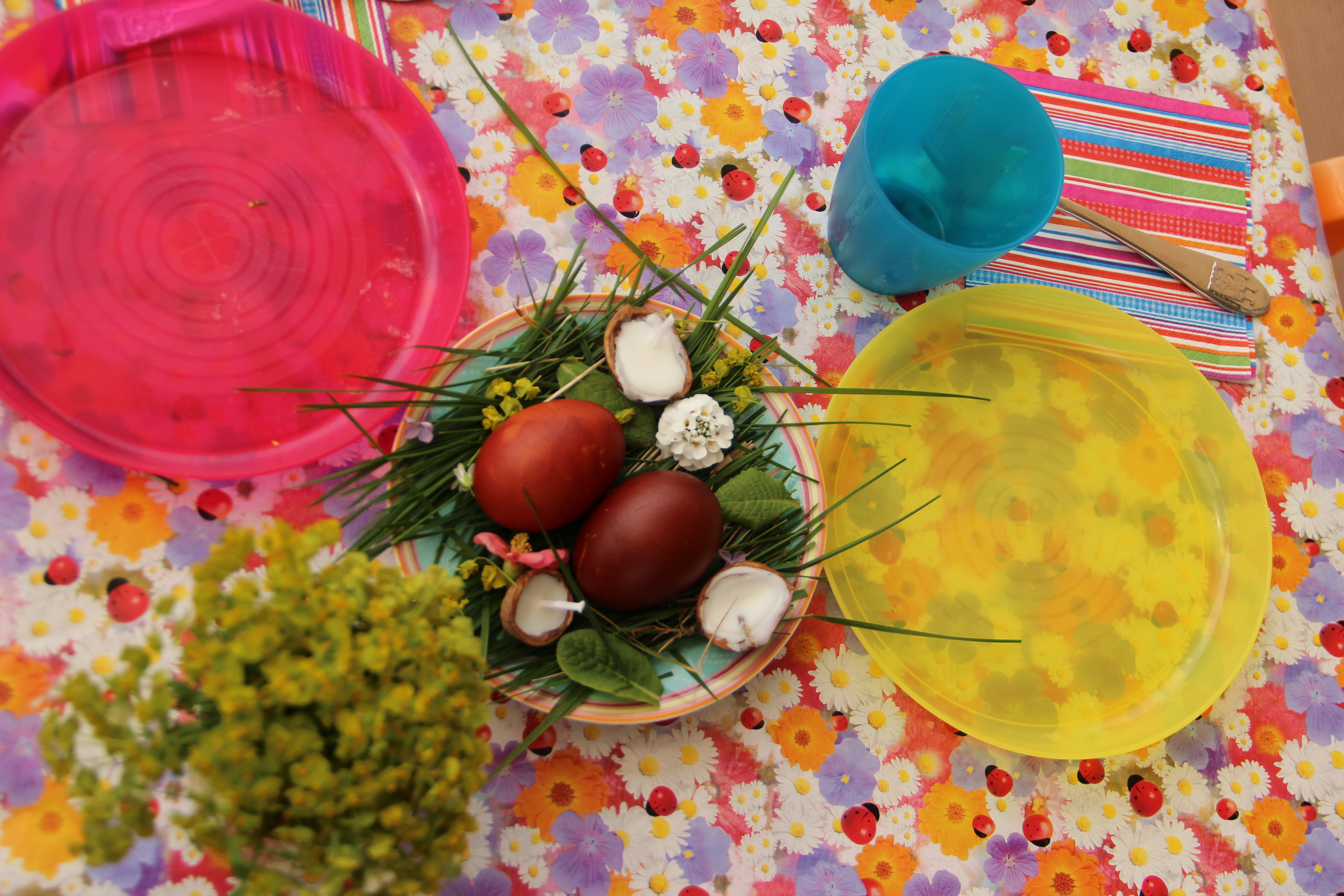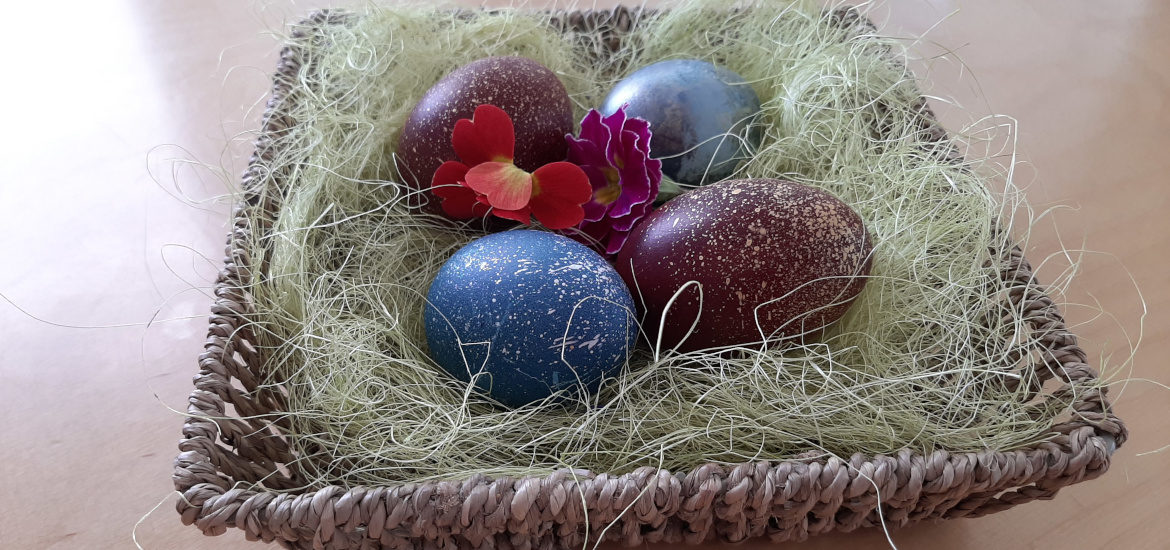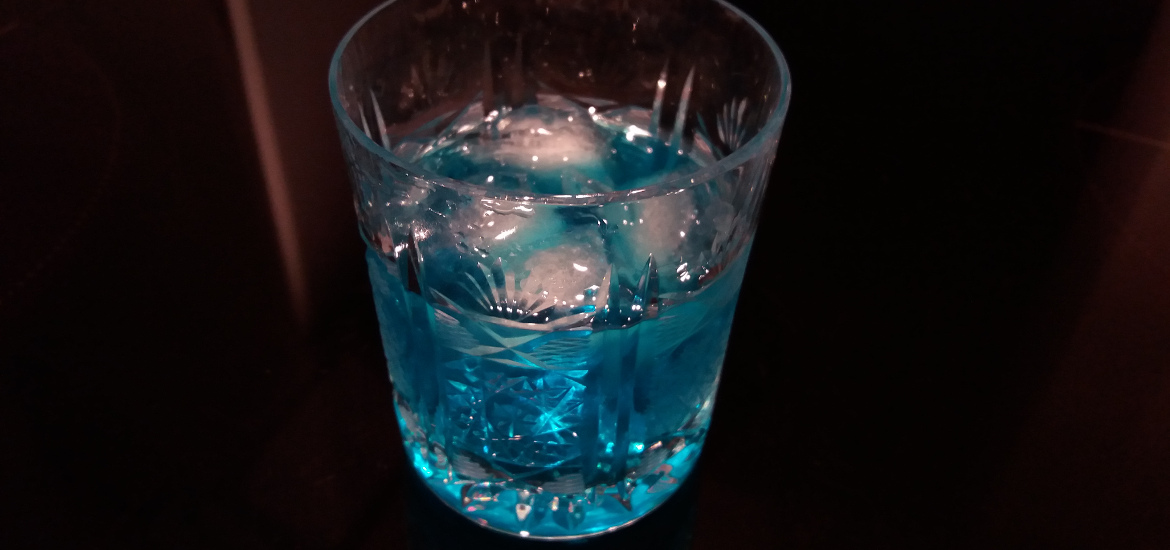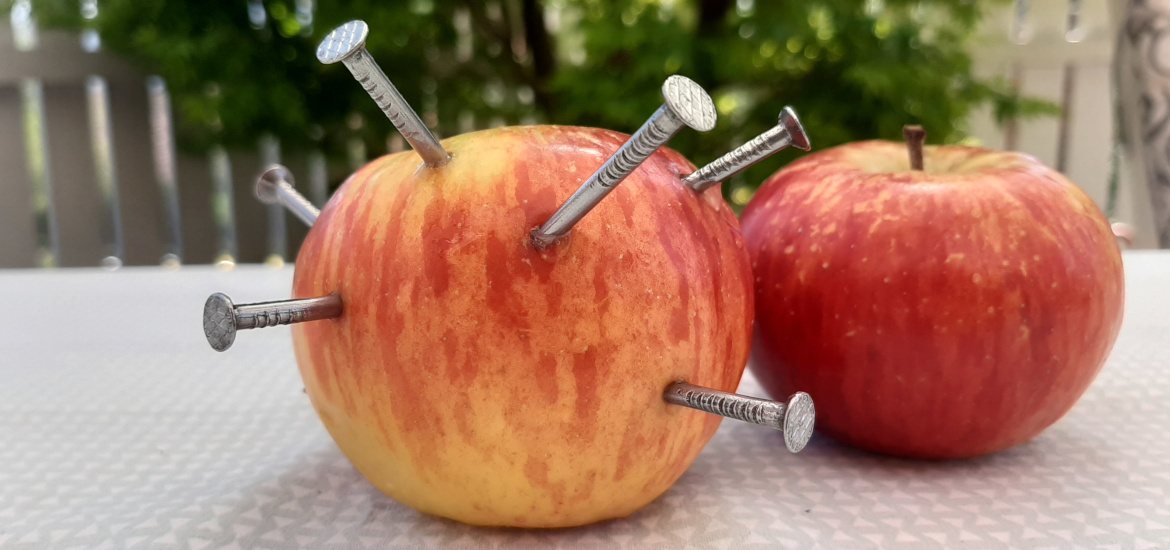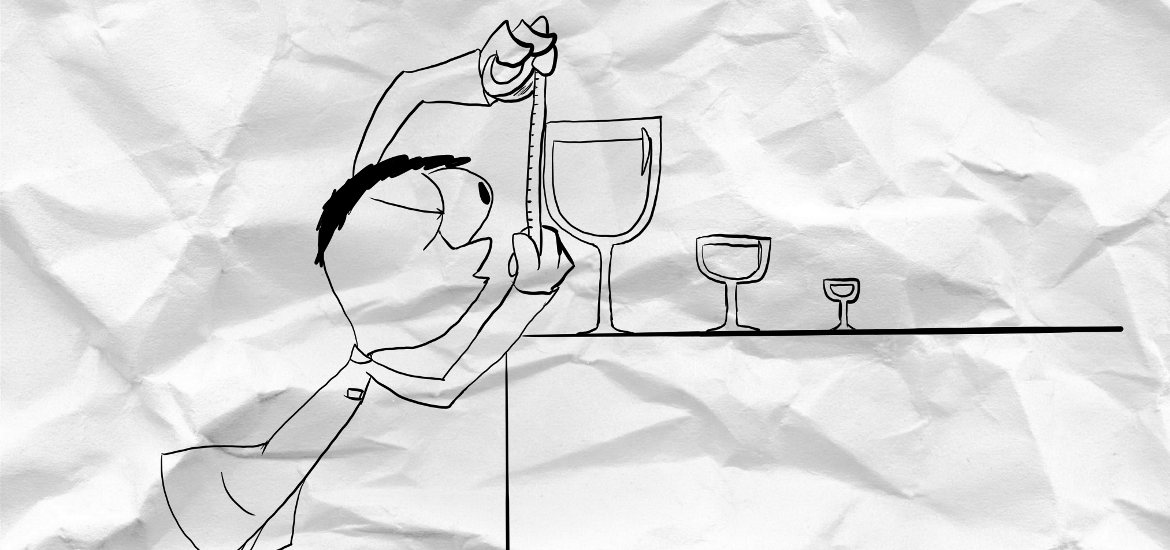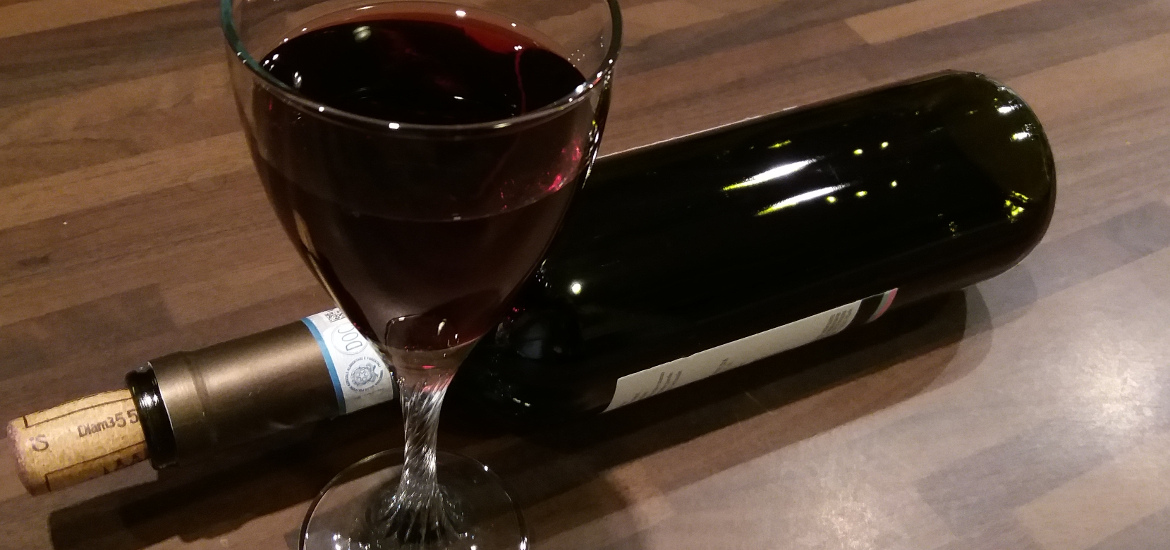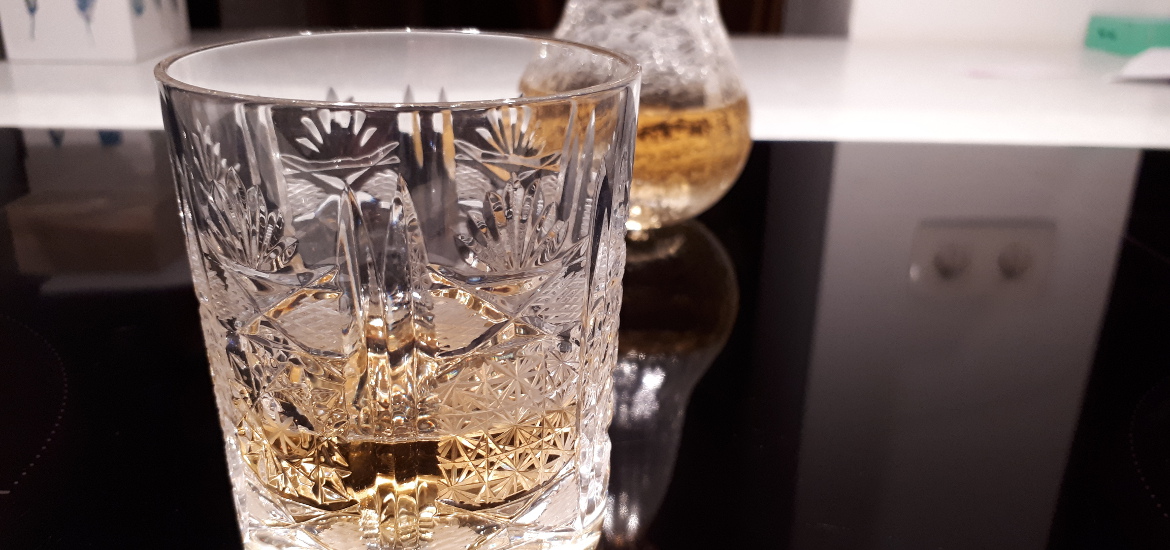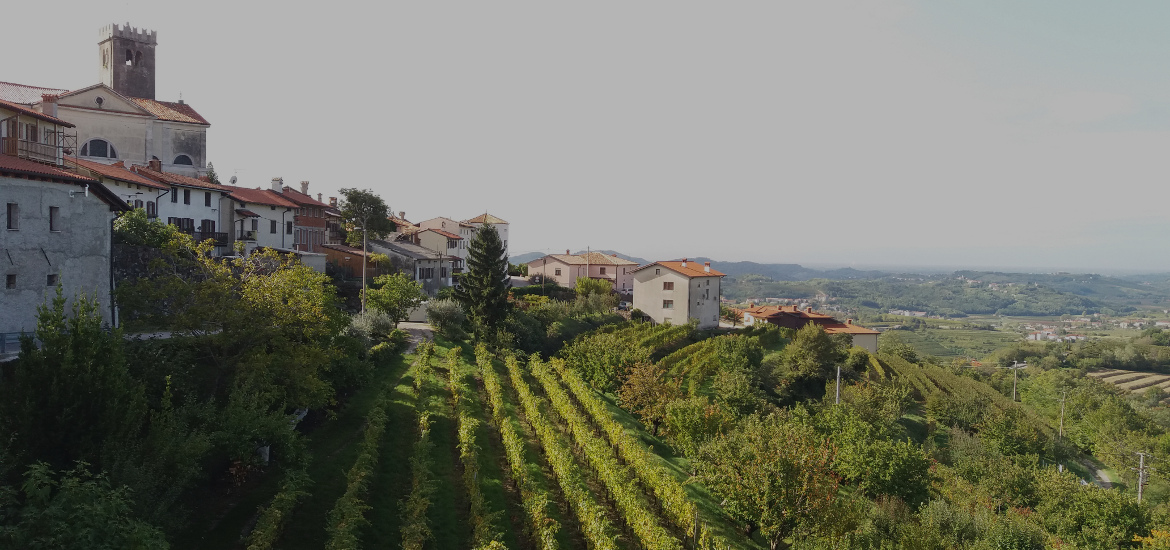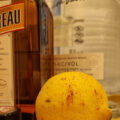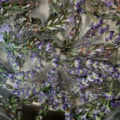Natural colors are usually preferred to synthetic ones. They tend to cause less irritation or allergies and in general more beneficial to your health.
Surprisingly, there are a lot of wonderful, totally natural colors. However, they are not universal and cannot be used for every occasion. Their main problem is that they are sensitive to heat and therefore have limited usability for preparing hot meals. Therefore for the first test I will focus on natural colors used for easter eggs. They can be used to produce wonderful, colored easter eggs and you do not have to worry about the environment or potential bed effects on your health.
Blue egg color
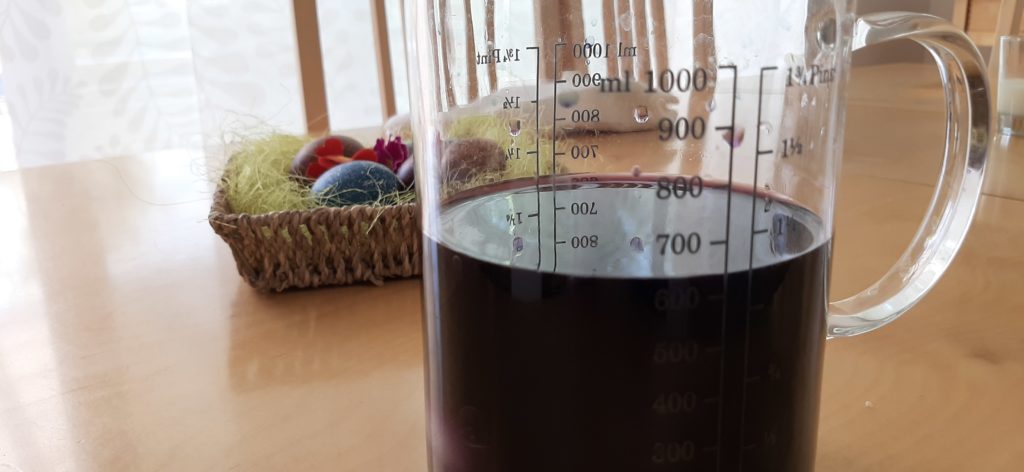
First is the hardest natural color: blue. Blue is the trickiest color, since it is really hard to get the right hue and it usually fades on heat and/or sunlight. Even the synthetic blue food colors suffer the same problem. Fortunately, there is a perfect natural color: red cabbage. Unexpectedly, eggs can be colored to any desired bluish hue. Just cut the cabbage into small pieces (2×2 cm), cover them with water in a suitable pot and boil for 30-45 minutes. Allow the water to cool down and remove the cabbage. Add 2-3 spoons of white vinegar to the purple colored water and you have the perfect natural egg dye. You can get the whole spectre of blue hues by adjusting the time that the eggs are in the dye. After 15 minutes you will have a translucent bluish hue, visible only on white eggs. If you leave the eggs in the dye solution overnight, you will get a deep blue hue. Just remember to rotate the eggs every once in a while so they are evenly colored. This is especially important if you are aiming for darker shades of blue. Some different shades of blue are shown on the picture below.
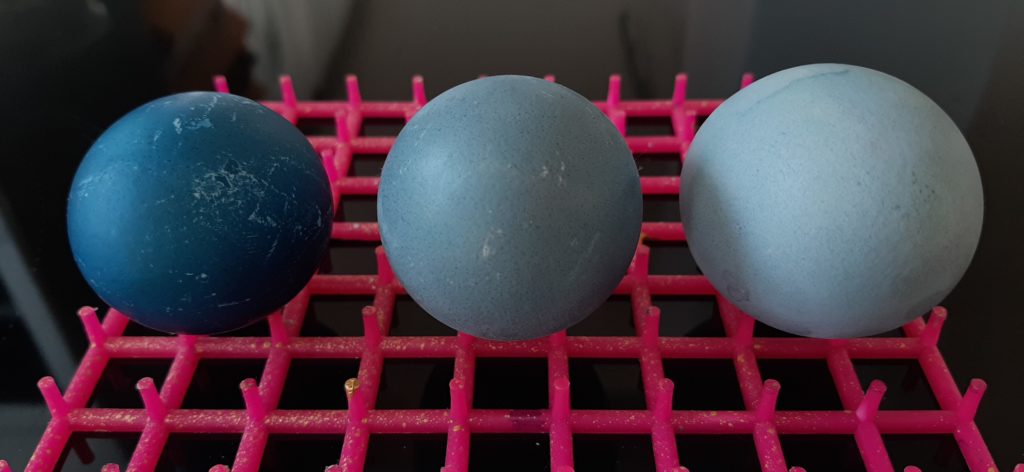
Brown egg color
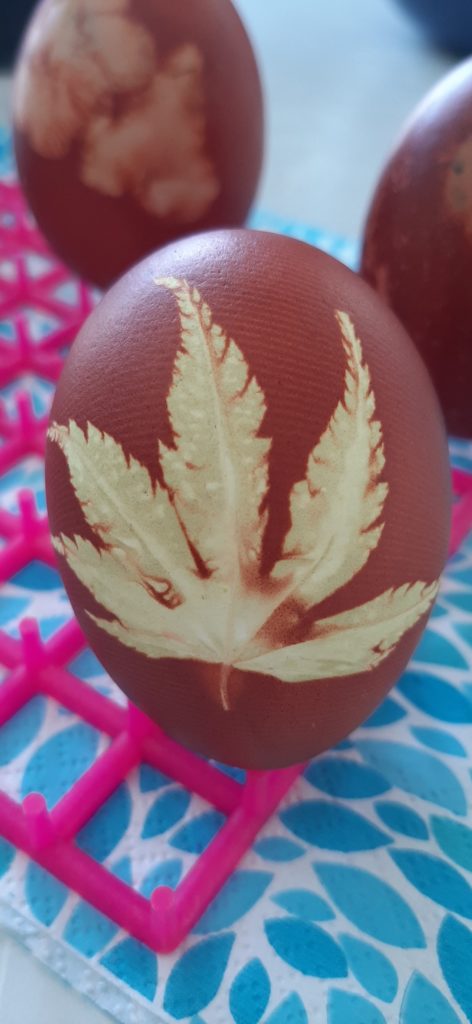
Next option is a simple one: brown color. Since the eggs are naturally brownish, this is not a drastic change. But you get nice, evenly colored eggs. The only thing you need are dry, brown onion leaves. The ones you usually throw away when you use an onion. You can collect them over time to have enough when you decide to color the eggs. Just remember to completely dry them so they don’t get moldy when you store them.
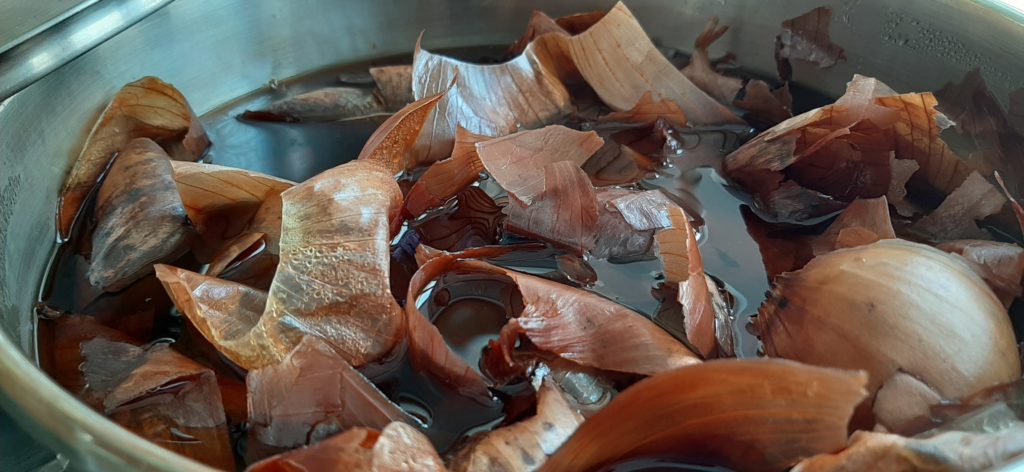
When you want to color the eggs, just put the eggs in the bowl and cover them with onion leaves. The eggs should be comfortably nestled between leaves – at least one onion worth of leaves per egg. Add water until everything is covered and add a spoon of vinegar. Bring water to boil and let it slowly boil for around 15 minutes. The longer you boli, the darker will be the final brown color. But you can do more than just brown color. You can wrap the eggs with rope, tapes or bandages to get a nice, unevenly colored surface. Or you can use plant leaves and fix them on the eggs with used nylon socks. That way you get beautiful negatives of the leaves or plant parts. If lucky you can get really detailed ornaments, including veins on the leaves. Simply magical.
Purple egg color
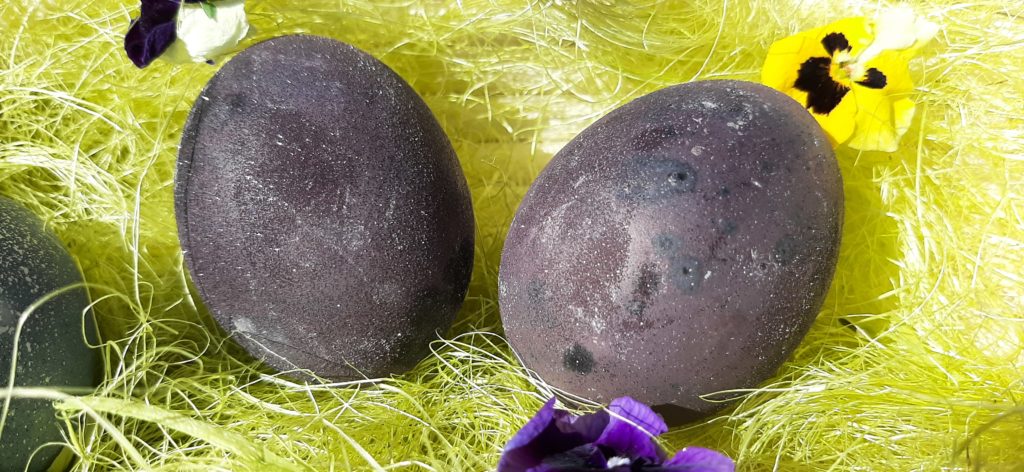
Another unusual option is to color the Easter eggs with red wine. Not any wine will do, it has to be dark red, like Refosco wine. The process is supereasy, the only downside is that you lose the wine used for cooking. Just cover eggs with wine, and do not be stingy, the eggs should be covered with wine for at least 1 centimeter deep, since some wine will evaporate. Bring the wine with the eggs to boil and cook on low heat for 15 minutes. Cool down and leave the eggs in the wine for at least a couple of hours. The longer you leave the eggs in the wine, the darker and more intense the color. In my opinion the best color is achieved after 12-14 hours. You can leave the eggs in the wine even longer. After a couple of days the eggs get a really dark, purple color. If you are lucky, small crystals can form on the eggs, giving them a nice, uneven look with a certain extra.
Other colors
There are a number of other options, I just listed my favorite ones. For instance green tea can be used for green color or curcuma for yellow color or black tea for brown eggs. If you have other favorite recipes, please drop me a line.
